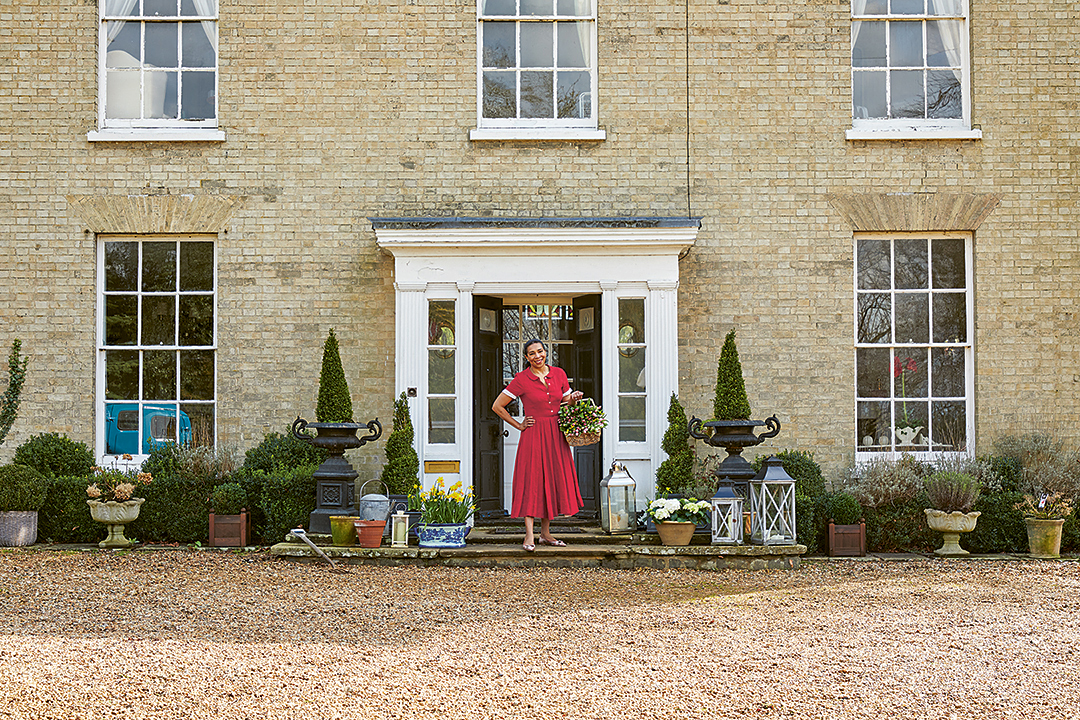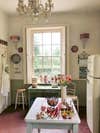6 Tricks for Nailing a Relaxed Country Home Look—Even If You Live in a City
From Hill House Vintage’s new book.
Updated Oct 19, 2021 10:47 AM
We may earn revenue from the products available on this page and participate in affiliate programs.
In her new book, Hill House Living, U.K.-based blogger Paula Sutton (aka Hill House Vintage) lays out her favorite guidelines for living a charming life in the country. Here are her six rules for achieving that look in your home, no matter where you live.
Go for Comfort
A room should be comfortable, to both the body and the eye, free from too many rules. —Nancy Lancaster
This is what Lancaster referred to as “mannered yet casual and unselfconscious.” The most comfortable rooms are free from strict rules and restraints. I remember visiting a relative in New York in the early 1980s. She was an extremely house-proud woman and, in many respects, her home was beautifully presented. However her sofas and chairs were covered in a rigid, clear plastic designed to protect the fabric and cushions underneath. I remember how uncomfortable it was—after initially having almost slid off the seat, I began to slowly feel my bare legs sticking to the plastic of the chair on a sweltering summer afternoon. My father and I spent a rather uncomfortable visit politely holding our drinks—too scared to place them down for fear of reprimand —while our hostess stared at them, terrified that we might scuff her precious seating and side tables through actual use. It was a relief to everyone involved when we had reached a decent enough time period to enable us to politely bid our farewells. I will never know whether she gained any pleasure from her seats. What I do know is that no matter how much we love our chairs, they shouldn’t have the power to bring us out in a cold sweat through use!
Functionality Matters
There’s no point in being obsessed with good taste and trendy design if the room isn’t comfortable and functional, too. I’m not a huge fan of the term good taste; it implies that there is only one version of taste. I do enjoy my own style and have a fixed view of how I wish my own interiors to look. However there are a multitude of alternative styles that I can admire and appreciate and even love, without them remotely resembling my own. I also agree with the idea that it doesn’t matter how beautiful a room looks if it cannot function and be fit for purpose. Our homes must be happy and peaceful enclaves of joy and comfort. They should offer a welcoming bear hug of love—never an icy or cursory kiss—no matter how beautiful.
Scale It Up
Scale—the size of furniture and objects in relation to the size of the room—is extremely important. Nancy Lancaster always believed that oversize items looked far more impressive to a room than undersize ones, which can look a little “mean” and leave a room feeling a bit unfinished. I love large sofas that several people can comfortably sit on at once. I also enjoy having at least one statement piece of furniture in a room with which to draw the eye. In my dining room, it is a French armoire filled with crockery. In my family room, it is a large antique dresser. These are the beautiful larger pieces that we can build the rest of the room around, and they often set the tone for everything else.
Understated Is a Statement
Understatement can be good—overdone, matchy-matchy, and over-embellished rooms can sometimes be too much. This may sound rich coming from me—I am the queen of adding a few more cushions and a lot of color, after all. But this is simply a guide to interpret in your own way. For me this means not trying to hurriedly finish a room in one swift attempt. There’s no need to grab matching statement pieces all at once. It’s fine for a room to take time, patience, and love to be finished. Accessories and soft furnishings can be curated and collected over a period so that you are able to choose individual pieces that you genuinely adore, rather than items that are manufactured to go together. In doing so, you can create an individual style that develops and becomes uniquely yours.
Mix It Up
The most successful rooms do not stick to a formula. They are not rigid or strict in their period or era. They are an eclectic mix of time and tastes, and that is their ultimate beauty. This is my personal rule, but it does follow one of my favorite quotes from Nancy Lancaster: “I never think that sticking slavishly to one period is successful; a touch of nostalgia adds charm. One needs light and shade, because if every piece is perfect, the room becomes a museum and is lifeless.” If I could wear this on a T-shirt, I would, as it echoes my sentiments about decorating perfectly. She also mentioned that a room should be like mixing a salad—which is a great analogy.
Furniture Is Storytelling
Don’t be afraid to allow your room and furniture to show its history and to show the signs of wear and tear. There is nothing more reassuringly satisfying than knowing that at least one piece of furniture in a room has a story. Even if it’s relatively recent, it can provide an extra thread to an already rich tapestry. History, depth, and substance are beautiful additions to any interior—even ones that seem to be modern on the surface. Similar to the faces of those whom we have loved for a long time, the signs of wear and tear add character and life to a room as well as beauty. Although I draw the line at dirt!
Reprinted with permission from Hill House Living by Paula Sutton. Copyright ©2021. Photographs by Simon Brown. Published by Clarkson Potter, an imprint of Penguin Random House.




